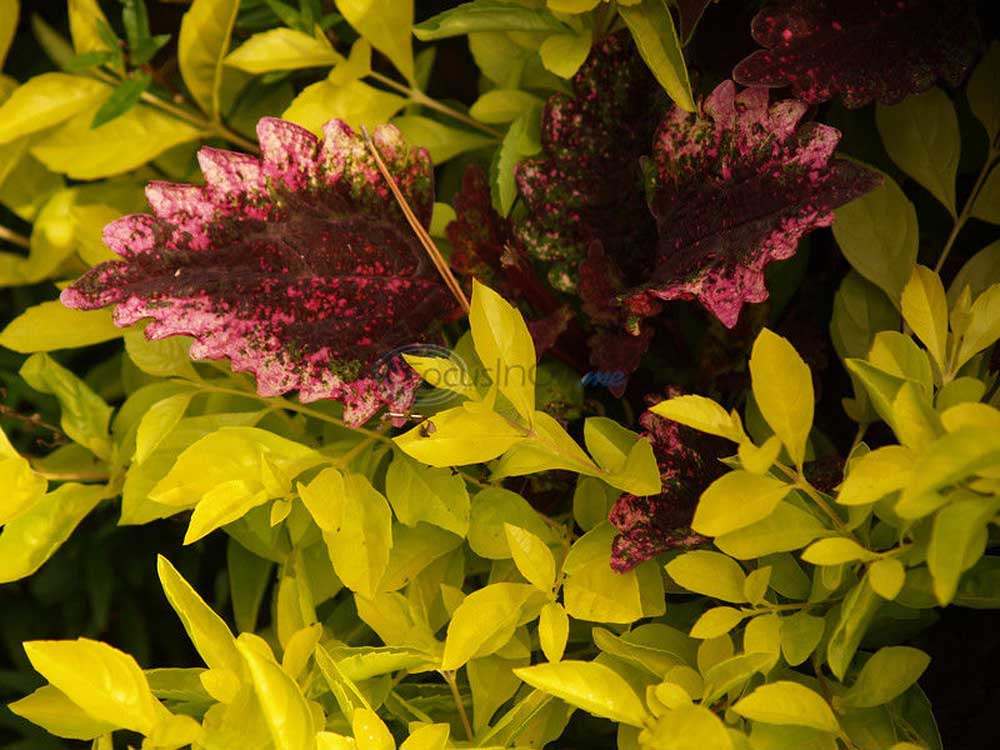September chores make for successful transition toward fall
Published 11:21 pm Wednesday, September 4, 2013

- Courtesy Colorful leaves of a coleus are shown against the backdrop of Cuban Gold Duranta; both freeze tender and worthy of rooting cuttings to save for planting next year.
September is a transition month, both culturally and horticulturally. Kids are back in school continuing their education, and the hot summer weather usually breaks.
For a fun way to continue your kid’s education, visit the Secret Garden in the AgriWorld exhibit at the East Texas State Fair later this month. The exhibit, designed by Smith County Master Gardeners with the Texas A&M AgriLife Extension Service, is for young and old alike. AgriWorld reminds us of the crucial and important role agriculture and our environment play in our everyday lives.
The fair’s website describes the reason for this exhibit: “In today’s urban society, few children have the opportunity to experience the sights and sounds of the farm. Their only contact with food and agriculture products is when they see them on the grocery shelf or in their own kitchens. AgriWorld offers a unique educational opportunity to help students relate the foods, fibers and other products they use each day to the industry that produces them.”
In addition to the Secret Garden exhibit, you’ll enjoy Country Life, Wildlife Wonders, Ag in My Community and the ImAGination Station.
IRRIGATION
Many garden plants finish their colorful displays this month, while others go strong right up to first frost. It is still rather dry in most locations, and September is an important time to wisely use irrigation water to avoid drought stress on woody and herbaceous perennial plants.
Trees and shrubs benefit from a good soaking every few weeks during hot weather in the absence of a good rainfall. Get and use a rain gauge to monitor rain events. While a shower might be a welcome break from summer heat, it may only drop a few tenths of an inch, not enough to do our plants much good. On the other hand, a thunderstorm may quickly drop an inch, but much of it may not soak in to the ground due to runoff.
With trees, we suggest watering long enough to move the water 6 to 8 inches deep into the soil. A long steel probe, like a long screwdriver, is a good tool to determine how deep the water from a rain or irrigation is penetrating. The steel shaft will easily go through moist soil, and then you will meet resistance at the dry front.
Do you have some favorite annuals or tender perennials that you would like to grow again next year? Take cuttings of coleus, sweet potato vine and other annuals, rooting them in pots and keep them on a brightly lighted porch through the winter.
Collect seed for next year’s garden from marigolds, cosmos, gomphrena, zinnias and other flowering annual and perennial garden plants. You must first allow the flower heads to fully mature and dry. Collect and lay seeds on newspaper or paper towels, turning often to dry; then store in glass jars or envelopes in a cool (40 to 50 degrees), dry, dark place.
When the temperature moderates, divide spring-flowering perennials such as irises, Shasta daisies, gaillardias, cannas, day lilies, violets, liriope, and ajuga. Reset divisions into well prepared soil with generous amounts of organic material worked into the top 8 to 10 inches.
LAWN CARE
I would suggest holding off on a fall application of fertilizer until we get a break in this weather. Fertilizing will stimulate more growth, which will require more water. Lawns can be fertilized as late as early October — this will help the grass build up food reserves during October and November to better make it through the winter months.
Be on the lookout for chinch bugs. This hot, dry weather is what they like, and if your St. Augustine is looking stressed and dying, but the weeds look fine, suspect chinch bugs.
Think back to early this year in late winter-early spring. Did you have a lot of weeds before the grass started growing? Annual bluegrass (Poa annua), chickweed and henbit are the most common weeds of the winter season. These are classified as cool-season weeds, germinating during the fall and winter months as soon as the soil cools. A pre-emergence herbicide (weed preventer) applied when the weather starts cooling off (usually in September) will help reduce the recurrence of the same weeds next spring.
Avoid herbicide applications on weakened grass (from pests or drought) or in dense shade. Carefully follow label rates of application, since applying more than the label rate can damage your lawn. Also keep in mind that you cannot overseed a lawn with ryegrass or tall fescue if you use a pre-emergence herbicide to control grassy weeds.
VEGGIE GARDEN
Your summer vegetable garden may be looking pretty ratty about now. Tomato plants frequently are attacked by spider mites, eggplant leaves riddled with flea beetle holes, and summer heat and drought stressing all garden plants. Make room for the fall garden, and sow for a winter harvest. You can plant beets, broccoli, Brussels sprouts, cabbage, carrots, cauliflower, Swiss chard, collards, kale, garlic, lettuce, arugula, mustard, parsley, English peas, radish, spinach and turnips this month.
A little trick to help get seeds up in hot soil is to soak seed furrows with water before sowing seed, and then lightly mulch the soil. This will help prevent the surface of the soil from crusting, while keeping the soil around the seed moist until it germinates.
Use your finger to gauge soil moisture, and water as needed to germinate and maintain the young, tender plants.
Keith Hansen is Smith County horticulturist with the Texas A&M AgriLife Extension Service. His web page is http://EastTexasGardening.tamu.edu. His blog is http://agrilife.org/etg.






